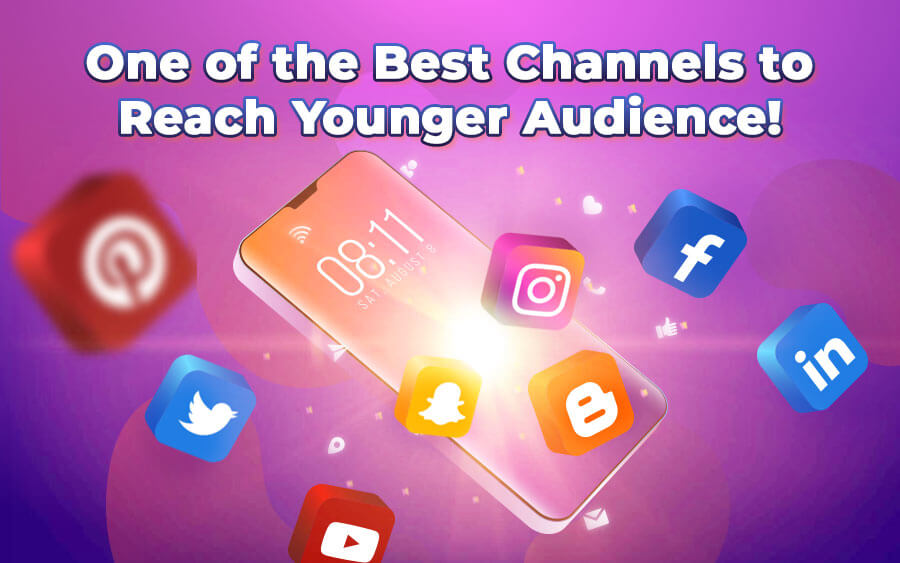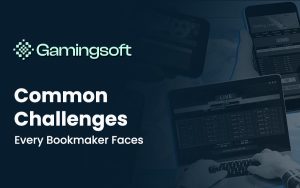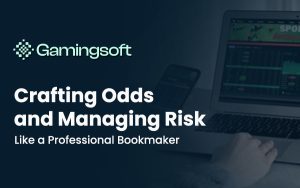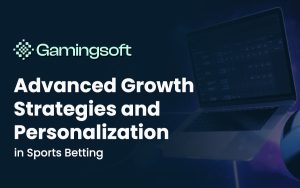Today’s iGaming brands live and breathe through social media. It’s no longer just a place to post flashy ads — it’s where conversations happen, trust is earned, and communities grow. Players now follow casino pages not for bonuses alone, but for connection and entertainment. That’s why building a strong online casino social media strategy is one of the smartest moves for any operator aiming to thrive this year.
Unlike traditional ads, social media allows casinos to build relationships in real time. Players want brands that talk back, celebrate their wins, and listen to their feedback. Studies like “The Role of Social Media Marketing in the Gambling Industry” and “Exploring Player Engagement Through Social Media Interaction” show that consistent, transparent engagement builds loyalty faster than paid acquisition campaigns.
In a market where competition is fierce, the key to growth isn’t more ads — it’s smarter storytelling. Below, we’ll explore how to create a social media strategy that actually works in 2025: from understanding player psychology to integrating AI-driven insights into your campaigns.
Why Social Media Matters for iGaming Brands
Social media is where your players already live. It’s where they talk about new games, share wins, and post screenshots of jackpots. For iGaming brands, that means visibility and reputation are shaped more by community sentiment than by paid promotion.
The journal “Understanding the Psychology Behind Gambling Behavior” explains that gambling behavior is emotionally driven — players are motivated by excitement, belonging, and social recognition. Social media perfectly amplifies these emotions.
Casinos that successfully integrate community management into their marketing see tangible results:
- Higher trust scores from repeat followers,
- More organic reach through player-generated content,
- And longer player lifetime value (LTV) from consistent engagement.
If you’re new to building engagement, check out “5 Tips for Effective iGaming Social Media Marketing” for baseline techniques like consistent posting, content balance, and interaction timing.
Step 1 – Define Your Brand Voice and Audience Segments
Before running ads or posting content, you need clarity on who you are and who you’re talking to. In 2025, brand voice is currency. It shapes perception, drives community tone, and determines whether followers stay loyal or scroll away.
The research “How Social Media Shapes Brand Identity and Audience Perception” shows that consistent voice improves credibility and player connection. For iGaming, this means defining whether you’re a premium casino with luxury appeal or a fun, casual gaming hub for entertainment seekers.
Build detailed player personas based on your data:
- Casual Gamers: Engage with memes, highlights, and lighthearted content.
- High Rollers: Expect exclusivity, polished visuals, and VIP narratives.
- New Players: Need educational posts, tutorials, and risk disclaimers.
Every post should reinforce your tone. If your brand is witty, use clever captions. If it’s elite, keep visuals sharp and minimal. A clear voice builds recognition faster than any paid ad ever will.
Use the checklist from “How to Promote Your iGaming Business on Social Media” to audit your tone, hashtags, and visual alignment across platforms.
Step 2 – Choose the Right Platforms for Maximum ROI
Choosing the right platforms has become a strategic decision, not just a matter of preference. Each network attracts different types of players, and understanding those nuances can make or break your campaign.
- TikTok: Perfect for quick, visual storytelling — highlight gameplay moments, winners, or creative challenges.
- YouTube: Great for deep-dive content like tutorials, player stories, or influencer collabs.
- Instagram: Ideal for brand aesthetics and event promotion.
- X (Twitter): Best for live updates, sports betting chatter, and trend participation.
- Discord or Telegram: Core hubs for VIP engagement and community interaction.
The article “The Best Regional Social Media to Promote Gambling” notes that Southeast Asia leans toward Telegram and Facebook communities, while Western Europe thrives on Twitch and Discord servers.
Experiment with cross-platform campaigns: for example, run a short teaser on TikTok that directs players to your full YouTube livestream, then follow up with a Discord-exclusive bonus code. The goal isn’t to be everywhere — it’s to be relevant where your players are active.
Step 3 – Create Compelling and Responsible Content
For iGaming brands, content defines credibility. Players scroll past aggressive promotions, but they stop for stories that feel real — ones that educate, entertain, or celebrate the community. The strongest casino brands know how to mix excitement with responsibility.
Research “Impact of Social Reinforcement in Online Gambling” confirms that players respond better to content that emphasizes social belonging and transparency. So rather than just saying “Deposit now!”, highlight stories that make players feel part of a shared experience.
Here’s what works in 2025:
- Micro-videos: 15–30 seconds showing real players winning or reacting live.
- Educational reels: Explain game mechanics, RTP percentages, or fair play tips.
- Community shoutouts: Celebrate top players or creative posts.
- Responsible gaming content: Share resources and limits transparently.
To see how content fits the bigger picture, explore “Top Online Casino Marketing Strategies That Actually Work in 2025” — which shows how content integration across the funnel builds trust and conversions.

Step 4 – Engage Through Influencers and Player Communities
No amount of self-promotion equals one honest influencer recommendation. In 2025, influencer partnerships remain among the most effective social growth tactics in iGaming.
The article “How Influencer Marketing in iGaming Builds Trust” explains that players see influencers as peers, not marketers. When streamers play your games, review your bonuses, or host live tournaments, followers perceive it as authentic endorsement.
Collaboration ideas that convert:
- Live casino challenges on Twitch or YouTube.
- Co-branded giveaways with verified influencers.
- Micro-influencer campaigns targeting specific markets (e.g., Filipino streamers for SEA engagement).
The study “Exploring Player Engagement Through Social Media Interaction” supports this: engagement increases when players feel like part of a social ecosystem rather than an audience.
Encourage players to tag your brand, use unique campaign hashtags, and reward UGC participation. This transforms your social presence from broadcasting to community-driven advocacy.
Step 5 – Integrate Email, Data, and Automation
Social media may generate awareness, but conversion often happens elsewhere — through email, chat, or direct promotions. The secret is integration.
Use data-driven funnels that connect social interactions to personalized follow-ups. Example:
- A user clicks a Facebook ad → joins a Telegram group → receives a personalized welcome bonus via email.
This creates a seamless player journey across multiple touchpoints.
The article Get More Email Subscriptions for Your Online Casino details how to transform social media traffic into long-term subscribers.
Meanwhile, “Cross-Channel Engagement in Digital Entertainment Marketing” from Theseus demonstrates that integrated communication increases repeat deposits by over 30%.
Leverage automation tools to trigger offers based on behavior — for instance, sending “Welcome back” messages after periods of inactivity or offering personalized rewards based on favorite games. Integration turns awareness into measurable growth.
Step 6 – Track, Analyze, and Optimize
What gets measured gets improved. Without analytics, even the best strategy is guesswork.
Track engagement metrics like:
- Reach & impressions: to measure visibility,
- Engagement rate: to evaluate content resonance,
- Conversion & CTR: to assess ad performance,
- Retention & reactivation rate: to gauge long-term ROI.
Cross-compare these metrics across campaigns to identify which platforms drive the highest LTV.
The article “Key Strategies for Running an iGaming Platform” provides valuable insight into integrating these KPIs into your platform’s backend dashboard for unified tracking.
Real-world example: one casino that implemented A/B testing on Instagram visuals saw a 22% jump in click-through rate by switching from promotional text to player-centric imagery.
Optimization never stops — treat every post as data.
Bonus Tip – Combine Psychology and AI for Predictive Social Engagement
Artificial intelligence is transforming iGaming marketing from reactive to predictive. Instead of guessing what will perform well, you can now anticipate engagement before publishing.
According to “Understanding the Psychology Behind Gambling Behavior“, player motivation hinges on emotion and reward anticipation. AI helps map these emotions at scale.
Examples of AI-driven applications:
- Predict the best posting time per segment based on behavioral history.
- Identify sentiment shifts in player comments for early crisis detection.
- Automate personalized replies while maintaining human-like tone.
Brands that combine behavioral psychology with AI insights see higher retention and fewer compliance violations. Still, as emphasized in “How Social Media Shapes Brand Identity and Audience Perception“, ethics remain essential — always disclose AI-driven content and ensure messages promote responsible play.
The balance between technology and empathy will define the next era of social media in iGaming.
Grow Your iGaming Brand with GS Marketing
Building a social media strategy that delivers measurable results takes precision, expertise, and consistent execution. That’s where GS Marketing steps in.
From crafting data-driven strategies to managing influencer collaborations and campaign analytics, GS Marketing helps iGaming brands scale faster — ethically and effectively. Our team ensures your brand message resonates, your campaigns convert, and your players stay loyal.
Conclusion
Social media has evolved into the heartbeat of iGaming brands. It’s no longer just a tool for visibility — it’s the stage where identity, trust, and loyalty are built every day. Success comes from blending human psychology, creative storytelling, and AI precision to deliver experiences that feel personal and genuine.
Casinos that prioritize authentic communication and data-backed strategies will dominate engagement, reputation, and retention.
Your social media isn’t just a channel — it’s your stage. Perform with purpose, engage with integrity, and your players will stay long after the curtain closes.
FAQs About Online Casino Social Media Strategy
-
How often should online casinos post on social media?
There’s no one-size-fits-all rule, but consistency matters more than volume. Most successful iGaming brands post 3–5 times per week per platform, with higher frequency during campaigns or live events. The key is maintaining predictable posting patterns that align with player activity peaks — especially on weekends and evenings.
-
Should online casinos focus on paid ads or organic engagement?
Both are essential but serve different goals. Paid ads drive visibility and quick acquisition, while organic engagement builds long-term trust and community. The most effective strategy combines both — using paid promotions to attract new audiences and organic content to keep them active.
-
Are there social media platforms that restrict gambling-related content?
Yes. Each platform has unique rules. For example, Meta (Facebook/Instagram) requires pre-approved advertiser status for gambling promotions, while TikTok and YouTube often restrict direct betting ads. However, educational, entertainment, or brand-awareness content is typically allowed if it complies with local regulations.
-
How can marketing and compliance teams collaborate on social content?
Close coordination is critical. Marketing teams should create engaging content drafts, while compliance officers review them for regulatory alignment before publishing. Setting up an internal workflow — or using tools like approval dashboards — helps prevent policy violations and keeps messaging consistent across markets.
-
How do social media algorithms affect casino visibility?
Modern algorithms reward engagement, not just activity. Platforms prioritize posts that trigger conversation, shares, and saves. For casinos, that means focusing on interactive content — polls, quizzes, and live sessions — instead of static promotions. Building genuine engagement signals boosts organic reach even under algorithmic restrictions.






